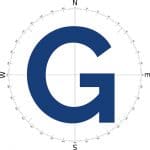Apache Kafka is an open-source distributed event streaming platform used by thousands of companies for high-performance data pipelines, streaming analytics, data integration, and mission-critical applications.
Category: Computing & data (Page 68 of 94)
Computing and data is a broad category. Our coverage of computing is largely limited to software, and we are mostly focused on unstructured data, semi-structured data, or mixed data that includes structured data.
Topics include computing platforms, analytics, data science, data modeling, database technologies, machine learning / AI, Internet of Things (IoT), blockchain, augmented reality, bots, programming languages, natural language processing applications such as machine translation, and knowledge graphs.
Related categories: Semantic technologies, Web technologies & information standards, and Internet and platforms.
Sensory unveiled VoiceHub, an online portal that enables developers to quickly create wake word models and voice control command sets for prototyping and proof-of-concept purposes. VoiceHub allows users to select languages and model sizes through drop down menus. Sensory’s VoiceHub provides developers with free tools to immediately create custom wake words and voice command sets for their applications. These projects take just moments to put together and some models are trained and downloadable within an hour of submitting them. VoiceHub outputs wake word and voice command set models, compatible with a companion Android application for quick prototyping, or as code for specific target DSPs for more advanced proof-of-concept testing. The tools allow developers to create wake word models, either custom branded or based on today’s most popular voice assistant platforms, and command set models targeting a desired memory footprint. This makes it suitable for all applications, ranging from ultra-low power, resource limited wearables to high-power, high-performance appliances on the edge.
Based on Sensory’s TrulyHandsfree technology, VoiceHub supports numerous languages for testing voice control across global product lines. Since VoiceHub trains voice models similarly to TrulyHandsfree, the wake word and voice control models created in VoiceHub are accurate and in most cases suitable for mass production. VoiceHub users can expect a steady stream of updates and new features, including support for more languages, expanded DSP platform support, and the ability to quickly develop large vocabulary natural language models. At launch, the platform supports DSP platforms from: Ambiq, Analog Devices, Cirrus, Cypress, DSPG, Foretmedia, Knowles, Motorola, NXP, Qualcomm, Renesas, ST Micro and TI.
From Kyle Wiggers at VentureBeat
The same week Facebook open-sourced M2M-100, an AI model that can translate between over 100 languages, Microsoft detailed an algorithm of its own — Turing Universal Language Representation (T-ULRv2) — that can interpret 94 languages. The company claims T-ULRv2 achieves the top results in XTREME, a natural language processing benchmark created by Google, and will use it to improve features like Semantic Search in Word and Suggested Replies in Outlook and Teams ahead of availability in private preview via Azure.
T-ULRv2, a joint collaboration between Microsoft Research and the Microsoft Turing team, contains a total of 550 million parameters, or internal variables that the model leverages to make predictions. (By comparison, M2M-100 has around 15 billion parameters). Microsoft researchers trained T-ULRv2 on a multilingual data corpus from the web that consists of the aforementioned 94 languages. During training, the model learned to translate by predicting masked words from sentences in different languages, occasionally drawing on context clues in pairs of translations like English and French.
As Microsoft VP Saurabh Tiwary and assistant managing director Ming Zhou note in a blog post, the XTREME benchmark covers 40 languages spanning 12 families and 9 tasks that require reasoning about varying levels of syntax. The languages are selected to maximize diversity, coverage in existing tasks, and availability of training data, and the tasks cover a range of paradigms including sentence text classification, structured prediction, sentence retrieval, and cross-lingual question answering. For models to be successful on the XTREME benchmarks, then, they must learn representations that generalize to many standard cross-lingual transfer settings.
The jury is out on T-ULRv2’s potential for bias and its grasp of general knowledge. Some research suggests benchmarks such as XTREME don’t measure models’ knowledge well and that models like T-ULRv2 can exhibit toxicity and prejudice against demographic groups. But the model is in any case a step toward Microsoft’s grand “AI at scale” vision, which seeks to push AI capabilities by training algorithms with increasingly large amounts of data and compute. Already, the company has used its Turing family of models to bolster language understanding across Bing, Office, Dynamics, and its other productivity products.
…
T-ULRv2 will power current and future language services available through Azure Cognitive Services, Microsoft says. It will also be available as a part of a program for building custom applications, which was announced at Microsoft Ignite 2020 earlier this year. Developers can submit requests for access.
https://venturebeat.com/2020/10/20/microsoft-details-t-urlv2-model-that-can-translate-between-94-languages/, https://www.microsoft.com/en-us/research/blog/microsoft-turing-universal-language-representation-model-t-ulrv2-tops-xtreme-leaderboard/
Alida (formerly Vision Critical) launched two new Alida products, enhancing existing core products and introduced their new Technology Industry solution. All these products are aimed at helping organizations uncover customer truths that can be put into action to improve the customer experience. New products include the release of Alida CXM (Customer Experience Management) and Alida Analytics, both previously announced on October 6, 2020. Alida Sparq is the flagship product within the Alida CXM and insights platform. Today’s release delivers several enhancements and innovations to ensure Alida clients can more efficiently understand how customers’ preferences, motivations and sentiments evolve over time, including:
- Calendar integration through Calendy that allows advocates to book interviews, product and concept walk-throughs, digital customer advisory board meetings and more
- Sample management to help administrators select the right members at the right time
- Mobile push notifications to create rules and set real-time alerts
- Text analytics improvements to allow multiple responses to the same individual activity
- Sensitive data redaction for users without sensitive data permissions, and more
Alida’s new Technology Industry solution is the second industry-specific package Alida will introduce in the coming months to help clients derive value from their CXM investments. The Technology Industry solution helps clients to inject customer insights and feedback continuously throughout the product life-cycle: from product development to product launch and beyond. The solution includes technology-specific customer experience templates, defined steps and narratives, and best practices to ensure collection of the right feedback to maximize actionable insights.
Today’s release also includes enhancements to Alida Touchpoint and Alida Surveys.
MariaDB Corporation announced a major expansion of MariaDB SkySQL cloud database. With this update, SkySQL now runs the latest version of MariaDB Platform X5, which most notably added distributed SQL capabilities for global scale. With the ability to be deployed as clustered or distributed, MariaDB SkySQL addresses customers’ specific needs within one cloud database. Update includes latest versions of MariaDB Enterprise Server, advanced database proxy MaxScale and smart engines ColumnStore and Xpand for new and expanded cloud capabilities, and offers:
- MariaDB Platform for distributed SQL: Xpand is a new smart engine that delivers distributed SQL through MariaDB Enterprise Server. This functionality is now also available in SkySQL with elastic scale, making it easy to increase or decrease capacity to handle anticipated usage spikes. Xpand in SkySQL also automatically rebalances data hotspots for optimum performance.
- MariaDB Platform for analytics: SkySQL includes a distributed cloud data warehouse that now provides massively parallel processing (MPP) for scalability and high availability on large datasets.
- End-to-end security: All SkySQL databases are secure by default. SkySQL now also enforces secure SSL/TLS connections for any database access, avoiding exposure of data due to insecure defaults or configuration choices.
- Reduced complexity for application development: SkySQL provides a single connection point for applications rather than exposing individual database instances, primaries or high availability replicas. SkySQL manages read/write-splitting, seamless failover and application session migration. The result is fault tolerance and efficient use of resources that is completely transparent to developers and end users.
- Expanded monitoring: SkySQL monitoring shows the status and all vital metrics for database instances and is customizable. The monitoring tool is updated to support the new topologies enabled in this new release of SkySQL such as Xpand for distributed SQL.
SkySQL is available now. New users who sign up now receive $500 in service credits.
Related articles:
OpenStack Foundation announced that it is changing its corporate name to Open Infrastructure Foundation (OIF) starting in 2021. The name change reflects the organization’s broader commitment and expertise in driving innovations in open source needed to shape the future of infrastructure software. OIF’s goal is to build an open infrastructure for the next decade by solving infrastructure issues raised by continuing demands in new markets. The demands are being driven by modern use cases such as containers, artificial intelligence (AI), machine learning, 5G, network function virtualization (NFV), and edge computing. OIF continues to build a community to write open source software that addresses these infrastructure markets. OIF wants to ensure that the solutions to these demands are developed in the open, using the same transparent and proven approach to open source.
InMotion Hosting joins the new Open Infrastructure Foundation with a Silver Founding Membership. InMotion Hosting’s latest open source product, Flex Metal Cloud, provides on-demand infrastructure as a service powered by OpenStack. The infrastructure technology simplifies private cloud deployments, increases infrastructure flexibility, and can be deployed in minutes.
BMC announced the acquisition of ComAround, a global software company that helps transform the customer experience with, self-service, and AI and NLP-based advanced knowledge management technology. Together, BMC and ComAround will build on their respective self-service, ITSM, and AI market expertise to provide NLP-based full-context-search knowledge management capabilities. Financial terms of the transaction are not disclosed.
ComAround Knowledge is cloud-based AI knowledge management software specifically designed to optimize self service and support flows, and create excellent agent and customer experiences through a variety of channels. Delivering the right information at the right time, the ComAround Knowledge solution feeds chatbots and virtual support assistants and organizes enterprise knowledge into a reliable resource for customers, employees, and support agents. Combined with the BMC Helix Chatbot and BMC Helix ITSM solutions, BMC can increase service desk efficiencies and transform the human experience, providing companies with the agility, customer-centricity, and actionable-insights necessary to become an Autonomous Digital Enterprise.
With real-time translation, ComAround Knowledge features full-text search, which interprets a user’s input and language analyzers to capture full context, delivering personalized results. Verified on Knowledge-Centered Service (KCS) v6, a standard for knowledge management methodology, the ComAround Knowledge solution supports translation of more than 100 languages and is currently used by hundreds of organizations worldwide.
Customer Data Platform Definition from the Customer Data Platform Institute
A Customer Data Platform is packaged software that creates a persistent, unified customer database that is accessible to other systems. This definition has three critical elements:
- “packaged software”: the CDP is a prebuilt system that is configured to meet the needs of each client. Some technical resources will be required to set up and maintain the CDP, but it does not require the level of technical skill of a typical data warehouse project. This reduces the time, cost, and risk and gives business users more control over the system, even though they may still need some technical assistance.
- “creates a persistent, unified customer database”: the CDP creates a comprehensive view of each customer by capturing data from multiple systems, linking information related to the same customer, and storing the information to track behavior over time. The CDP contains personal identifiers used to target marketing messages and track individual-level marketing results.
- “accessible to other systems”: data stored in the CDP can be used by other systems for analysis and to manage customer interactions.

